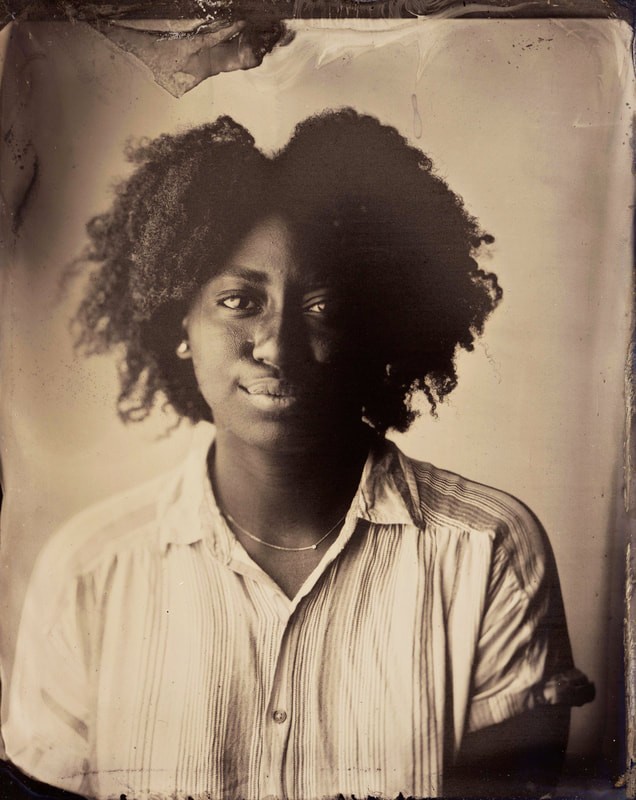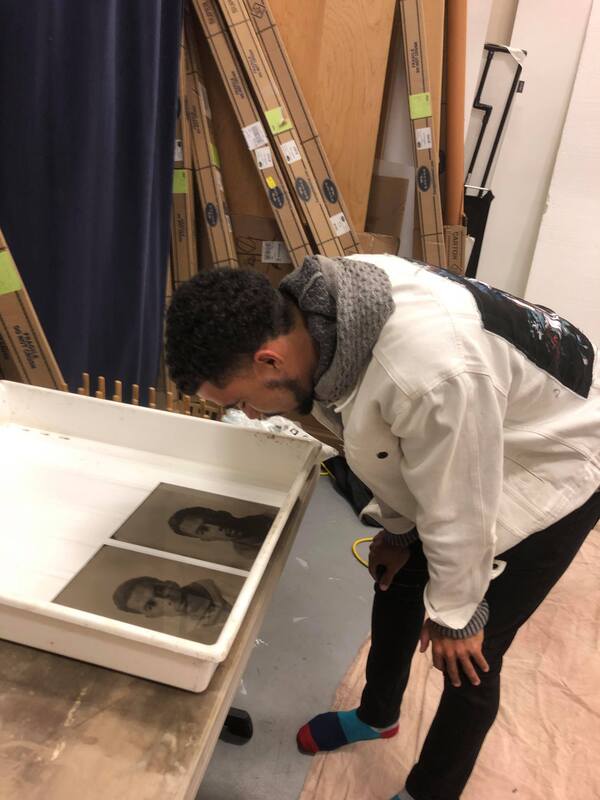
Light emanates from their eyes. Emotion echoes in their words. They are members of the Black community in Utah, and their experiences come to life in the photography exhibit, “The Black Stories Project,” now on display on the fifth floor of the Harold B. Lee Library.
The project features portrait photographs of 76 Black women, men and youth made using tintype, a photographic process that dates to the Civil War era. In tintype photography, a thin metal plate is coded with a chemical called collodion. The plate is then sensitized to light with silver nitrate and inserted into a non-digital, accordion-like camera called a field camera. The field camera is then exposed to light, embedding the image onto the plate.

Black Stories Project creator Madison Casagranda said experimenting with the tintype medium since January inspired her artistic endeavor. She said the use of tintype is symbolic because it is visually jarring, and conversations about race can sometimes be uncomfortable.
She also said tintype has historical relevance to her project: the last time it was widely used was during the Civil War, and some of the last Black people to be photographed using tintype were slaves.
“I feel like we have to address our history if we are going to address racism today because it’s so connected,” Casagranda said. “That’s why I used this process for the project.”
Casagranda said she created the project because she wanted to connect with the Black community, and making art collaboratively seemed like a good way to do that. The tintype process required that she spend two hours with each of the 76 individuals she photographed.
“I would come home and listen to the interviews and just kind of cry and feel really sad for these people and sad for the experiences they’ve had,” Casagranda said. “I would feel a sense of protectiveness. I would feel angry for them and feel angry about things. I felt really emotionally invested in it.”
Casagranda said the emotional investment, along with the huge investment of time required for the project, was overwhelming at times. “I haven’t been exhausted like that since my mission. I really feel God blessed me to have the energy to do it. I could not have done it without that extra blessing,” she said.
As part of the project, Casagranda recorded video interviews featuring the portrait subjects. The interviews feature members of the Black community sharing their thoughts on dealing with racism, expressing Black culture and experiencing faith.
Anisha Adderly, one of those photographed, said those who want to be involved in anti-racism should recognize that they benefit from a system of injustice, but the most effective way to make a difference isn’t always taking to the streets. “We don’t need posters; we don’t need people always at the protests. In your workplace, in your classrooms, it’s really just if you see (racism), say something,” she said.
Model Alexandria Byrd said she hopes people won’t go to protests for social justice “just for the ‘gram,” referring to Instagram, and that people will continue to be involved with the Black Lives Matter movement when it is no longer trendy.
Another model for the project, Tony Shade said the most important change to be made is internal. “Yes, a lot of organizations and higher-ups can and should be doing a lot more, but we also can work on ourselves so easily and Google is free. You can do whatever, you can learn, and not always forcing Black people to teach you.”

Model Damian Teasley said he is proud to be Black and is proud of his heritage, but he hopes to be seen not only as a Black student who excels but simply a student who excels. He plans to go to medical school and hopes to transcend stereotypes.
“When people, especially of other races, come along and help in that fight (against racism) it isn’t really making it a Black and white issue, but an everyone vs. racism issue, and that’s what I hope we can do with all of these movements going on,” Teasley said.
David Teasley said he believes the answer to racism is faith. “I feel like if people were to find faith, or to rely on their faith more, they’d realize that hate can’t really live in a person who has faith or who wants to have a loving community. If we relied on faith a little bit more, just righteous principles, we’d live in a better community.”
Casagranda said as a photographer, she has grappled with the concept of exploitation. “Photography is almost always exploitative because you’re using peoples’ bodies and their faces to bless your own career. That gets really complicated in a project like this, because of my position as a white person who is photographing Black people,” she said.
Casagranda was adamant that those she interviewed should be the focus of the project. She also said she hopes the exhibit will open difficult, but important, conversations about race.
“You can go in, sit down, watch a few videos, and then have a conversation with someone you visited the gallery with or someone you ran into there. I hope that it’s a safe space where those uncomfortable conversations can start and then continue,” she said.
The exhibit was previously on display in the Harris Fine Arts Center in October. It moved to the fifth floor of the Harold B. Lee Library on Nov. 29 and will be open until March 26. The photographs and videos can also be viewed on this website.




